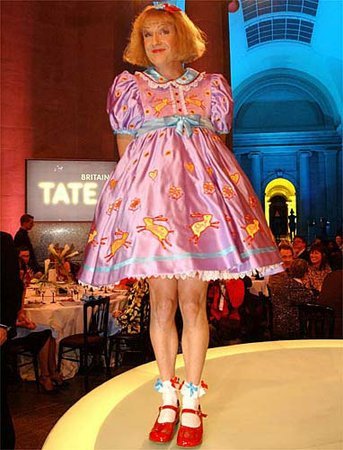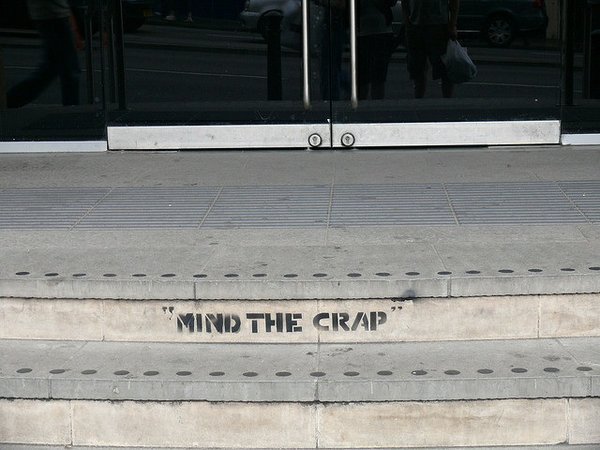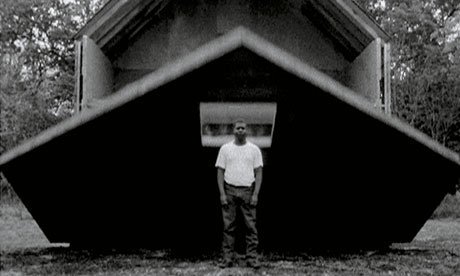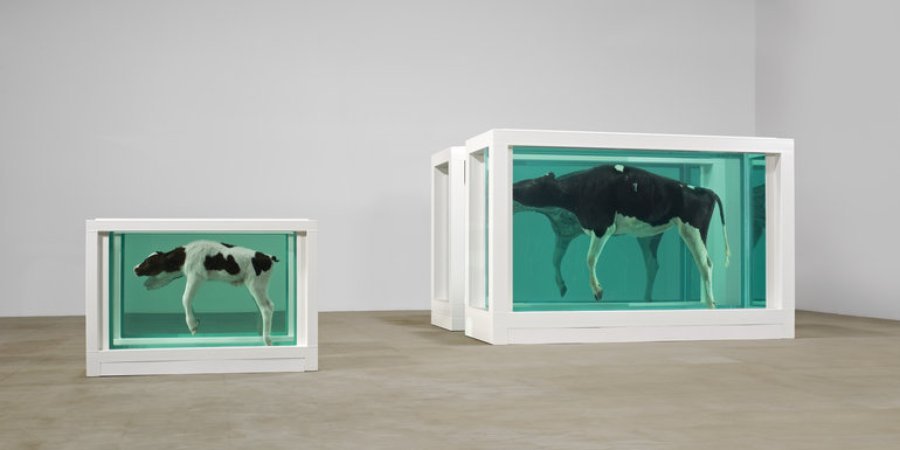Since it was established in 1984, the Turner Prize, awarded each year by the Tate to an outstanding British artist, has become a lightning rod for criticism from the British establishment. In a typical assessment, culture minister Kim Howells once said the Turner was an award for “cold, mechanical, conceptual bullshit,” a judgement heartily endorsed by Prince Charles. Just as predictably, Fleet Street tabloids have proclaimed their outrage over nominated art that has featured sex dolls, dead animals, and used condoms.
Of course, all this talk, no matter how negative, is music to the ears of those in the art world who are more accustomed to fretting about art being marginalized in contemporary culture. For six months each year, controversy surrounding the shortlisted nominees, the Tate's exhibition of their work, and the ultimate winner can reliably draw the general public attention to contemporary art, and ultimately that is the goal. Without all the commotion, some ask, where would the
YBA
s be today?
Related Links
A Guide to the World's Biggest Art Prizes
FROM CONTROVERSIAL BEGINNINGS
 Rachel Whiteread's
House
(1993)
Rachel Whiteread's
House
(1993)
When the Patrons of New Art created the Turner Prize in 1984, controversy loomed even before the nominees were announced. Critics worried that the founders' decisions to name the prize after J.M.W. Turner, a radical painter in his day, signaled their intention to award controversial art, and they did just that. In the first decade of the prize, the art wasn't the only controversial part, however—the jury and rules of the prize were scandalous, too. Art critics complained that the winners were too old or not even artists at all (curators were nominated during the '80s), and that there were no women on the first shortlists and juries. Tabloids alleged that the jury was accepting bribes from artists. Tension reached a boiling point in 1990, when the Turner Prize was cancelled due to a lack of funding.
The decade that followed fixed many of the problems that plagued the early years. Turner Prize chairman and Tate director Nicholas Serota amended the rules such that the nominees had to be under the age of 50. Perhaps even more importantly, Serota made it so that the winning artist had to be, well, an artist. Soon, women also made appearances on the shortlist, most notably in 1997, when the shortlist was entirely women. Since Rachel Whiteread became the first woman to win in 1994 for House (a concrete cast of the negative space contained in a Victorian house that had been torn down), five more women have won, including this year's Laure Prouvost. In terms of diversity, this year was also notable for the nomination of Lynette Yiadom-Boakye , the first black female artist to get such a nod.
A SHOCK TO THE SYSTEM
 Tracey Emin's
My Bed
(1998)
Tracey Emin's
My Bed
(1998)
If you let the tabloids tell the tale, the Turner Prize makes for some of the most X-rated material the art world sees every year. Among some of the prize’s most racy or offensive works are: Tracey Emin ’s 1998 readymade My Bed , a reinstallation of the bed that she slept in for a week while she was depressed; Chris Ofili ’s 1998 multimedia works that used elephant dung; Damien Hirst ’s use of two dead cows encased in vitrines and placed in formaldehyde for Mother and Child, Divided from 1993; and Jake and Dinos Chapman ’s remarkably unsexy 2003 readymade Sex , which used two sex dolls to establish a connection between sex and death. Even works that didn't have explicit content managed to draw the ire of a confounded public. In 2001, controversy arose when Martin Creed won for Lights Going On and Off , a conceptual installation in which Creed set the lights in an empty gallery space to turn on and off at regular intervals. And in 2007, there was a similar public outcry when Mark Wallinger won for Sleeper , a 154-minute film of the artist walking around a German gallery wearing a bear suit.
Within the art world, reactions to the nominated art, which has always tended to be highly conceptual, have been sharply divided. Some, such as Frieze co-editor Dan Fox, have praised the prize-nominated art for using shock to help England to define what art is. Others have dismissed the art as being too easily provocative, too conceptual, or both.
THE ART OF CONTROVERSY
 Grayson Perry accepting his award as Claire
Grayson Perry accepting his award as Claire
Even if the Turner Prize is meant to celebrate art, its most famous bouts of controversy often arise in response to events or people that surround the art. In 1997, the year when Gillian Wearing won for 60 Minute Silence (an hour-long video of police officers sitting in silence), Tracey Emin stormed out of a dinner, drunkenly declaring that she would rather be with her friends and her mother. The next day, Emin told tabloids that she did not remember what she did the night before. Presenting the prize itself has also proved to be something of a hotbed for controversy. In 2001, pop star Madonna , never one to play by the rules, began cursing on live national television as she was presenting a related award to promote freedom of expression. Two years later, in a sensational gesture more closely related to the art, 2003 winner Grayson Perry accepted his prize for his frank, sometimes disturbing painted ceramics dressed as his transvestite alter ego Claire.
WHEN ONE PRIZE ISN’T ENOUGH
 Granny Abuse's Turnip Prize entry
Fish Full of Dollars
Granny Abuse's Turnip Prize entry
Fish Full of Dollars
In 1993, Whiteread actually had two victories. As mentioned before, she won the Turner Prize, but she also won the K Foundation’s first Anti-Turner Prize, determined to award the worst artist in England. Whiteread’s double victory showed the art world just how polarizing one award could be. As a result, other awards have popped up in opposition to the Turner Prize. Most notably, the Turnip Prize was created to award anything that was “rubbish”—in 1999, the year after Ofili’s much talked use of elephant dung, the organizers played on common refrain of "Is it art?" by bluntly asking, “Is it shit?” Both anti-awards continue to pay out money to what the backers deem to be bad art as parody to the Turner Prize.
RADICAL RESPONSES
 Banksy's controversial 2002 statement
Banksy's controversial 2002 statement
In 2002, street artist and troublemaker Banksy echoed the sentiments of the Anti-Turner Prize and the Turnip Prize by spray painting “Mind the crap” onto the steps of the Tate. He was not the only one to feel that way, however. Many people have claimed that the Turner Prize jury likes conceptual art too much, but none have been more vocal about that than the Stuckists, a radical group of artists that aim to bring spiritual value back to art. Since their formation in 1999, the Stuckists have picketed the prize each year, loudly protesting Charles Saatchi’s YBAs and particularly targeting Tracey Emin as an example of what they believe is overly conceptual art.
THE PHYSICAL IMPOSSIBILITY OF PREDICTING THE TURNER PRIZE
 Still from Steve McQueen's prize-winning film
Deadpan
(1997)
Still from Steve McQueen's prize-winning film
Deadpan
(1997)
Of course, controversy can have benefits beyond drawing the attention of a public largely disinterested in art. Many art world insiders will say that Tracey Emin won the Turner Prize in 1999 for My Bed —despite the fact that that year, Steve McQueen actually won. And as we saw again this year, the winners continue to surprise critics and other art world insiders. But perhaps that’s what’s best about the Turner: Like the art itself, the prize is impossible to predict.
























